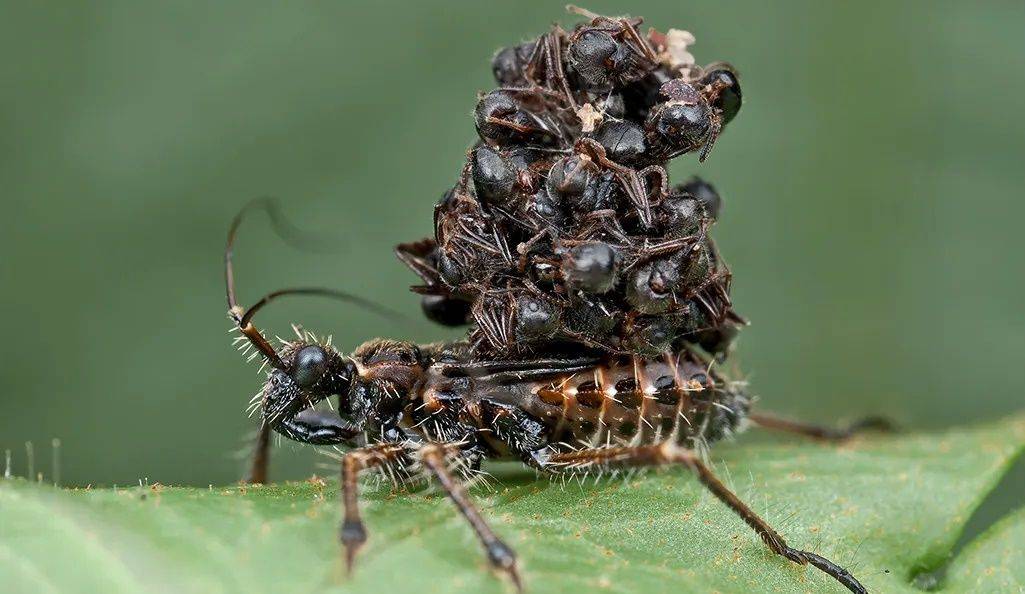IF ONE THING is true about human beings, from the Mayans to the Chinese to the Celts, it’s that we just can’t help decapitating our enemies and putting their disembodied heads to “good” use. Certain peoples believe the heads provide spirit to the community, others use them to intimidate their foes, and still others shrink them and keep them as souvenirs. Even Disneyland has an animatronic head called Shrunken-Head Ned, because nothing quite says family values like ritualistic decapitation.
Meanwhile, the aptly named assassin bug looks on and wonders what all the mercy is about, for this insect impales its prey and sucks it dry, then attaches the entire corpse to its back. Not just one or two at a time, mind you—these bugs can be found lugging around massive piles of their foes. Burdensome and unnecessarily sinister, it would seem, but this functions both as visual and olfactory camouflage as well as highly effective armor.
There are some 7,000 species of assassin bugs the world over, and while not all engage in this remarkable behavior, each is equipped with nasty, highly hardened mouthparts called a rostrum. With this the assassin bug stabs through the exoskeleton of its prey—ants and termites and bees and such. An outer sheath peels back once inside to expose the maxillae (mouthparts used for chewing) and mandibles, according to biologist Christiane Weirauch of the University of California, Riverside.
They then inject a toxin that paralyzes the victim in a fraction of a second and begins liquefying its innards, as a spider would do to its prey. “Essentially they make the hole,” Weirauch said, “they hook the mandibles in, they inject the stuff, then once the victim stops twitching they can insert the maxillae even a little bit farther and then start slurping up the contents.” It’s all quite a bit like that bug from Starship Troopers drinking that guy’s brains (link is NSFW, obviously, unless you work at the Official Starship Troopers Fan Club, in which case, kudos to you for not giving up on the things you love).
Then, utilizing a sticky secretion on their exoskeletons, some species will pop the corpse up onto their back. Exactly how they do this is a mystery, according to Weirauch, given that they can’t reach their back any better than humans can lick their elbows. But in addition to the pile acting as camouflage from predators, Weirauch says: “What happens when a gecko tries to capture one of those, is it might actually end up with a mouth full of ant carcasses rather than a juicy assassin bug.”
The camouflage actually works the other way around as well, helping the assassin bug avoid detection by the critters it hunts. A species that goes after termites, for instance, will cover itself in their nest material to not only blend into the surroundings, but also to assume their scent.






















